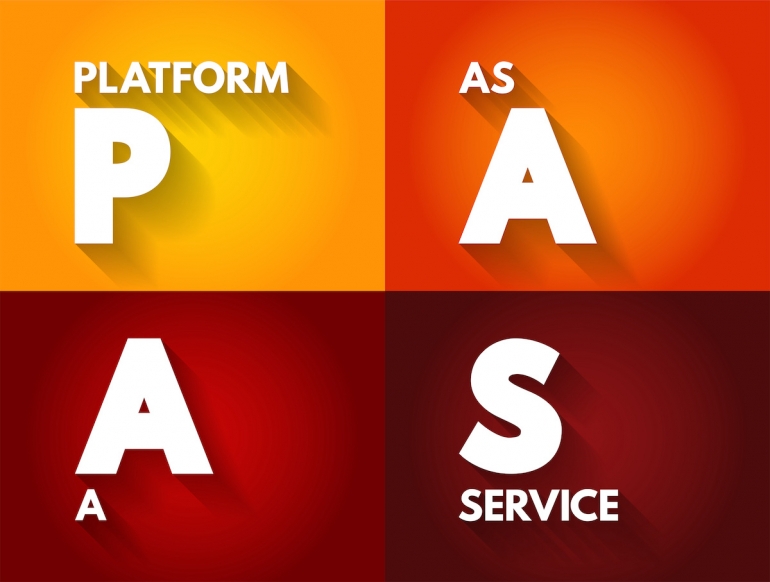PaaS is a form of cloud computing that provides businesses with all the tools of a cloud ecosystem. Learn about its benefits, drawbacks and features.

In recent years, there has been a clear deviation from physical infrastructure to cloud-based models. This is because cloud platforms allow organizations to sync systems, adapt to business trends and maintain cohesion around the world. Platform-as-a-Service solutions are a major facet of this increasingly viable corporate strategy.
PaaS is, at its simplest, an all-encompassing product that allows businesses to evolve. It is something that many major cloud providers specialize in, and organizations around the world are finding it to be an increasingly important part of conducting business.
Jump to:
What is PaaS?
PaaS generally refers to the entire suite of tools that providers offer for organizations looking to migrate to a cloud business model. Much like hybrid cloud technologies, this allows for greater control over operations and simplifies the cloud system for businesses.
SEE: Hiring Kit: Cloud Engineer (TechRepublic Premium)
PaaS deviates in its scope, however, by providing everything a customer needs to transition to a cloud computing approach. Businesses do not need to have their one infrastructure or software on-hand, as PaaS providers grant organizations all available cloud tools. This practice is common among cloud providers, and platforms like Microsoft Azure, IBM Cloud and Amazon Web Services all provide PaaS in addition to other services.
Benefits of PaaS
There are numerous benefits to utilizing PaaS models. One of the first considerations is often cost, and PaaS is a much cheaper alternative than investing in infrastructure and creating an in-house cloud platform. Platform as a service also allows for quick and sustainable growth. AWS, for example, lets customers increase or decrease their subscription benefits as needed.
Cloud platforms offered by PaaS providers are also considered secure. Providers often grant organizations private digital storage and allow companies to restrict access to software tools around the world. Businesses operating with PaaS are able to get work done remotely, from anywhere, without fear of security setbacks. It is also worth noting that PaaS frequently includes collaborative tools that allow employees to access systems and multitask with different versions of digital software as often as they require.
These are a few of the major benefits of PaaS, though every organization will likely discover its own advantages of operating via cloud computing technology. Platforms are becoming more sophisticated with each passing day, and the tools offered by PaaS providers will only become more inclusive in the coming years. Now is a good time for businesses to consider a cloud strategy if they have not already done so.
Drawbacks to PaaS
That doesn’t mean that there are no drawbacks to PaaS models. Security, while mentioned above as a benefit, can also be a setback. Though business operations are often secure and streamlined, there is always the risk that the PaaS provider might have an internal security issue. Given that all data stems from a cloud archive, a problem could mean a serious breach for customers.
There are also redundancies within a PaaS model. Tools that organizations don’t need, for example, cannot be removed from a platform. This means that businesses must relinquish a degree of control in the name of a simpler and more effective system. Finally, PaaS providers all operate in slightly different ways. An organization that eventually wants to migrate operations, or use the tools of a different provider, may find that integration becomes incredibly difficult.
Overall, however, PaaS makes sense for many businesses, especially those that are smaller and have fewer resources than established brands. It is important for companies to weigh both the benefits and disadvantages before engaging in a cloud model.
Features of PaaS
Collaborative workflow
PaaS includes options for collaboration. These tools are more sophisticated than many standard software services. Businesses are able to encourage employees to work simultaneously on multiple versions of a project or edit the platform from anywhere. Collaboration via cloud computing can improve workflow and improve productivity.
Control over permissions and software access
PaaS products allow businesses to grant or restrict access to aspects of the platform with ease. This lets companies decide when, how and who will be contributing to internal details of the cloud.
Platform customization
Using code, automation and software tools, organizations are able to customize PaaS systems as they see fit. As noted above, there are parts of the platform that are unchangeable, which can be frustrating. The majority of the time, however, customization is a viable and encouraged option.
Scalability
Just as brands can easily restrict or grant access to software, they can also scale up or down with the same level of ease. This is advantageous during busy seasons, for example, when companies may need more resources than during other months of the year.
Cloud services
Of course, PaaS models also include cloud tools. PaaS could not exist without the cloud. They are both linked. Therefore, management, navigation, integration and other cloud computing tools are available as part of a PaaS structure. In one concentrated platform, businesses are able to access many of the essential tools they need.
The bigger picture
For those wishing to read more about cloud computing, TechRepublic has recently explored the advantages and disadvantages. The benefits include such things as a protection from professional-level cybersecurity and predictive insights, while the drawbacks can be limited control and vendor compatibility issues.
